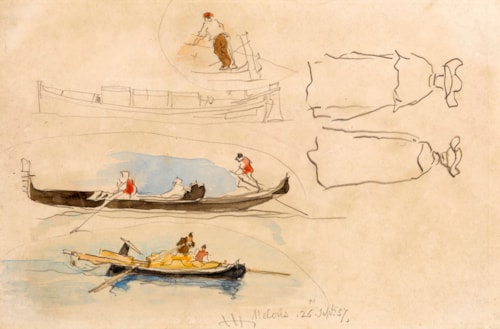
James HOLLAND
Burslem 1799 - London 1870
Biography
Born in Staffordshire, James Holland was apprenticed as a painter in a factory in Stoke-on-Trent at the age of twelve, painting flowers on pottery. In 1819 he settled in London, where he continued to work as a pottery painter and also produced watercolours of natural history subjects, but at the same time began to focus on landscapes. By 1824 he had a floral still life painting exhibited at the Royal Academy. At the beginning of the 1830s he began to travel extensively around Europe, and soon established a reputation for paintings and watercolours of Continental views, and in particular for depictions of Venice. Aaprt from Italy, Holland also travelled to France, Portugal, Switzerland, Austria and the Netherlands. Holland joined the Old Water-Colour Society in 1835, and exhibited nearly two hundred works there over the course of his career. While his watercolours of the 1830s show the particular influence of Richard Parkes Bonington, by the following decade his style had become looser and he began to produce works extensively heightened with bodycolour. Holland exhibited regularly at the Royal Academy, showing both paintings and watercolours, as well as the Society of Painters in Water-Colours, the British Institution and the Society of British Artists. The contents of the artist’s studio were dispersed at auction a few months after his death in 1870.




